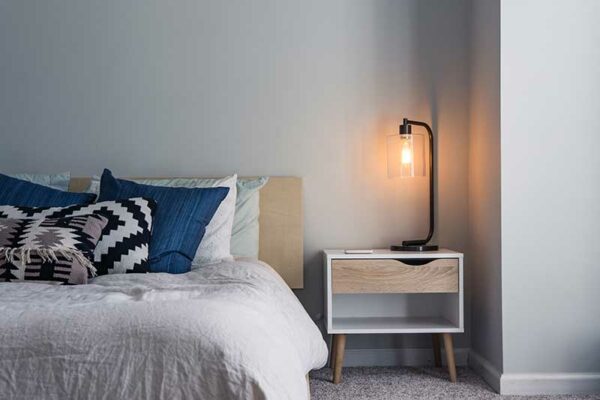The customer service team is always listening, taking notes, and quantifying complaints to ensure our products are continually improved. Due to selling directly to you, the customer, via Amazon, we can use product reviews to help us improve our existing products or help further development of new products.
How Does Temperature Affect Relative Humidity
Table of Contents
Lots of people wonder how does air temperature affect relative humidity? You must understand that moisture is present in everything including the air. Just like a sponge, the air soaks up moisture. It’s called humidity.
Relative humidity means how much moisture is in the air at a certain temperature. If the temperature rises, but the moisture in the air remains constant, then the relative humidity decreases. What does this mean?
Equilibrium
When water evaporates into the air from, let’s say a puddle, it morphs into vapor. The vapor forms a gas. More water forms more vapor and forms more gas. When the amount of water and the amount of vapor and gas reach the same amount, it’s said to be equilibrium. The weather man will call the air “saturated.”
Raising the temperature makes evaporation of the water faster, making it turn into vapor faster. The higher the temperature, the more water the air can hold before it becomes saturated.
Comfort Level
Homeowners adjusting their thermostats might wonder how does a decrease in temperature affect relative humidity. They feel comfortable with the thermostat set to 75 degrees. The ideal relative humidity inside a house is said to be about 40 percent. This keeps mold and mildew from forming, it keeps wood products like the flooring from warping, and it also keeps the paint from peeling.
However, your comfort has a lot to do with relative humidity. Dry air is said to be relative humidity of at or beneath 25 percent. Air at or above 70 percent relative humidity contains moisture resulting in mold and mildew. Dry air makes the paint peel, while wet air causes mold. Comfortable air is right in the middle. Now you could have a look at the temperature and humidity level around you if you’ve got an indoor/outdoor thermometer & hygrometer.
Dew Point
We’ve all seen the sheen of moisture on the grass on cool mornings. How does lowering air temperature affect relative humidity? Let’s say you run your air conditioner down from its comfortable 75 degrees to perhaps 69 degrees. However, you haven’t made arrangements to decrease the amount of moisture in the air.
By decreasing the temperature but not the moisture content, the relative humidity has become 100 percent. Colder air doesn’t need as much moisture to be saturated. When the moisture evaporates, it becomes dew. You’ve seen it on the windows during the day and the grass in the early morning. It’s the same process.
Moisture In Your Home
Showering, watering the plants, steam from cooking, and filling the washing machine with water all contribute to the relative humidity inside a house. Too much humidity in a house draws pests, because they need moisture to stay alive.
It also gives asthmatics and those with COPD a hard way to go to breathe normally. Add to that headaches, heat exhaustion, and heat stroke, and you have a recipe for trouble.
Homeowners usually turn the air conditioning down in order to control the relative humidity indoors. Others plug in the dehumidifier or turn on the whole-house dehumidifier built in when the house was built. How will homeowners know when to do these things?
Relative Humidity Meter Readings
Many instances in a home require accurate relative humidity meter readings. Installing new hard wood floors, mold remediation following a water problem like flooding, and when the HVAC unit is on the blink. The readings will tell homeowners if the temperature is too high or too low to the ratio of moisture in the air.
The Best Way To Test Temperature And Humidity Levels In Your House
This is where homeowners could benefit from using Wireless Indoor/Outdoor Thermometers. No one stops the think much about how temperature manages our lives. If it’s too hot or cold at work, we can’t think, and nothing gets done or done well. We can’t relax at home after a hard day’s work if it’s too hot or cold. Even the cars we drive are temperature-related: we roll down the windows on hot days and roll them up on cold ones.
Life today is wireless. Technology has given us an indoor/outdoor thermometer with which we can control the relative humidity in our homes. Homeowners can glance at the small plastic register to see the temperature both inside and out. They can then judge quite accurately how to adjust the air conditioner or to turn on or off the dehumidifier.
How To Use ThermoPro Thermometers and Hygrometers
Homeowners know what a thermometer is, but they might not know what a hygrometer is. It measures the relative humidity in the air. Looking at the device will tell homeowners several separate facts with just one glance.
- It will tell homeowners the air quality (dry, comfortable, wet.)
- Homeowners will see the high and low readings, which tells them the range of ideal temperature and relative humidity.
- Temperature hygrometer tells homeowners what effect the temperature and relative humidity has on wood products like floors and furniture, skin, asthma and allergens and so forth.
- It comes with one AAA battery and a three year warranty. Homeowners should register their ThermoPro thermometer hygrometer to add the warranty from one to three years.
Now you could have a look at the following related ThermoPro indoor/outdoor thermometers & hygrometers and choose the one that suits you most.
Tips: How To Deal With Temperature Extremes In Relative Humidity Testing
Let’s say you’re laying a new hard wood floor. The relative humidity should be at least 50 percent. Any higher or lower, and the wood will buckle or warp. ThermoPro’s thermometer hygrometer measures the humidity in the air. When testing, it’s best to control the ambient temperature or room temperature. You’ll get the truest reading that way.
Take multiple readings. Temperature and relative humidity change from moment to moment. If they remained static, we’d have no troubles at all. Multiple readings give homeowners a better percentage of relative humidity with which to work.
Check the dew point. Generally thought a more accurate measure of relative humidity, dew point is when the air is saturated. It’s a more absolute measure.
Conclusion
Now you understand the nature of and the science behind relative humidity. Looking at your ThermoPro temperature hygrometer will tell you at what percentage of relative humidity it’s time to turn up or down the air conditioner or turn on the dehumidifier. Keep hot, steamy showers to a minimum, water the plants outside, and wash laundry in cold water.











